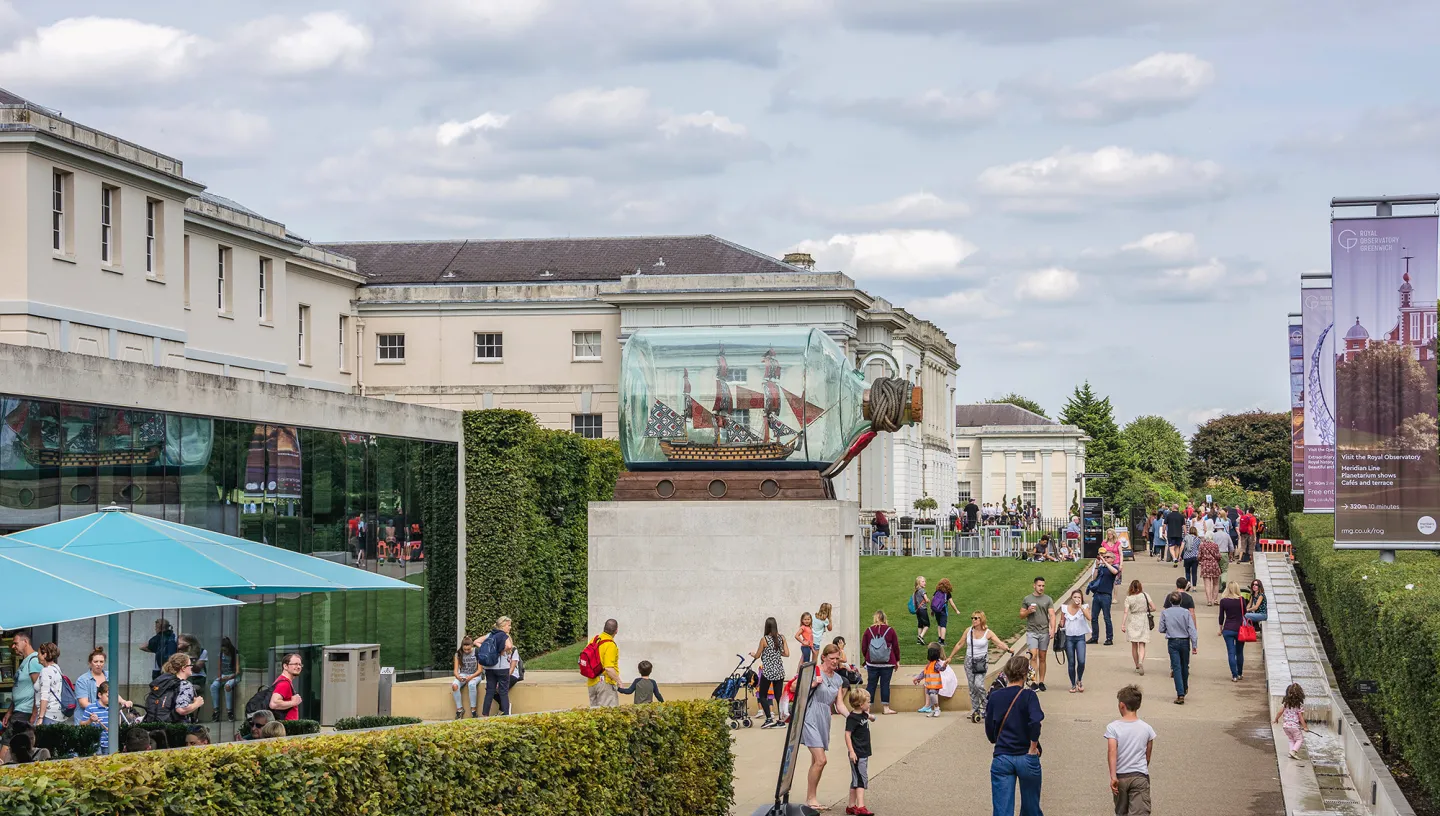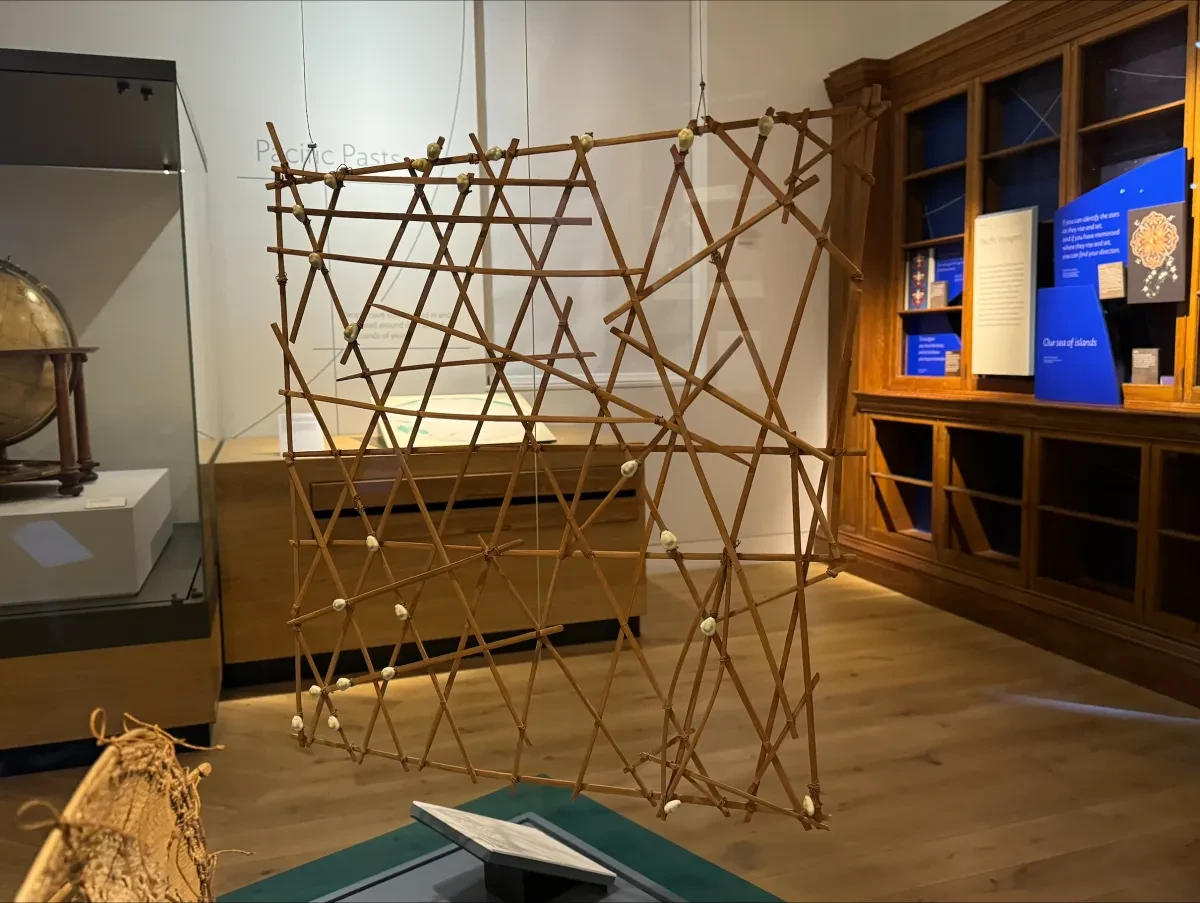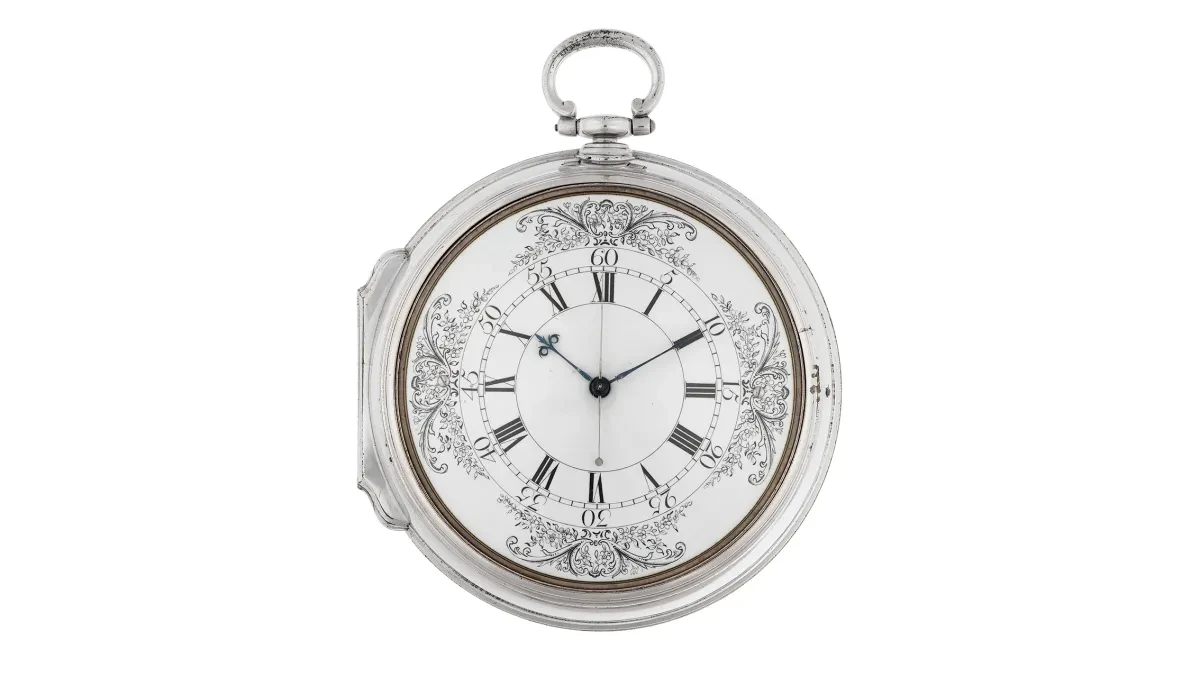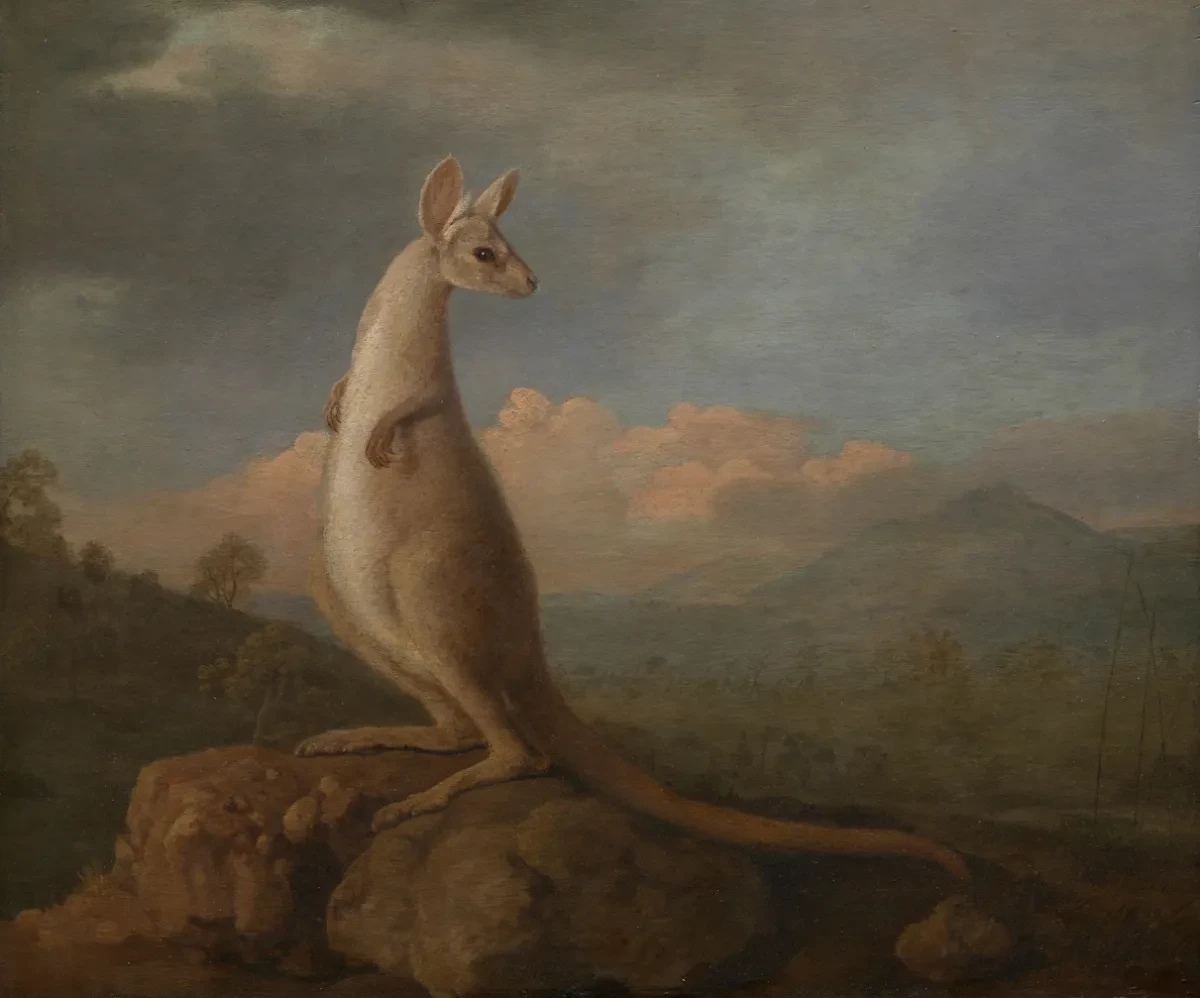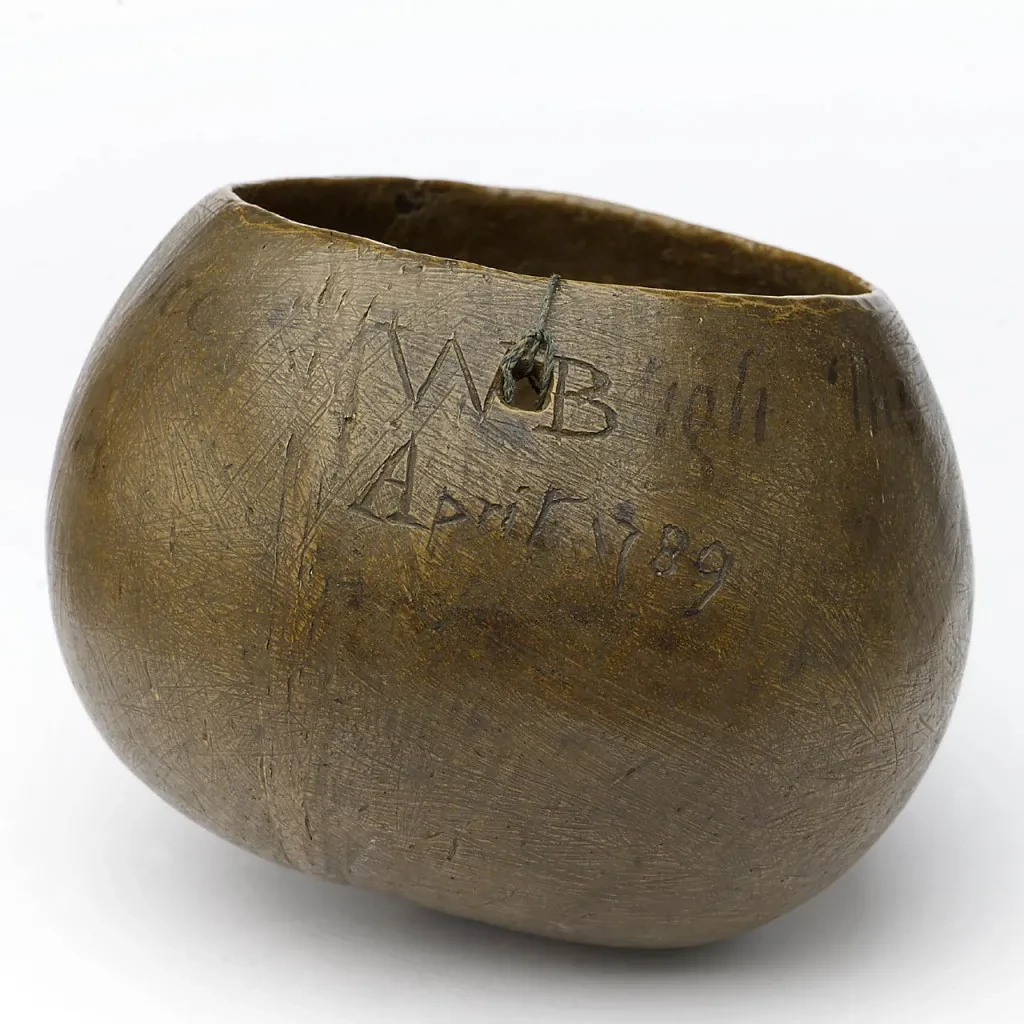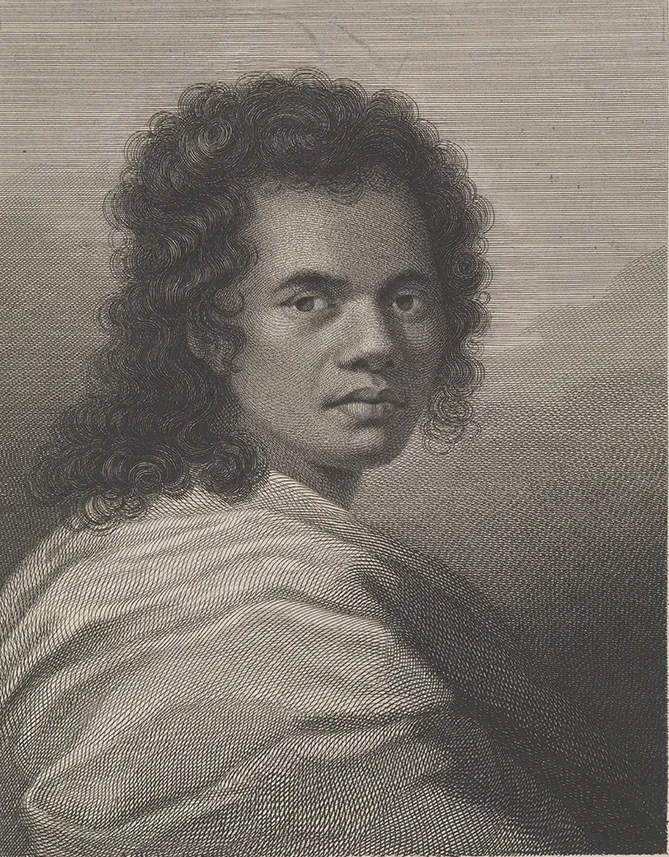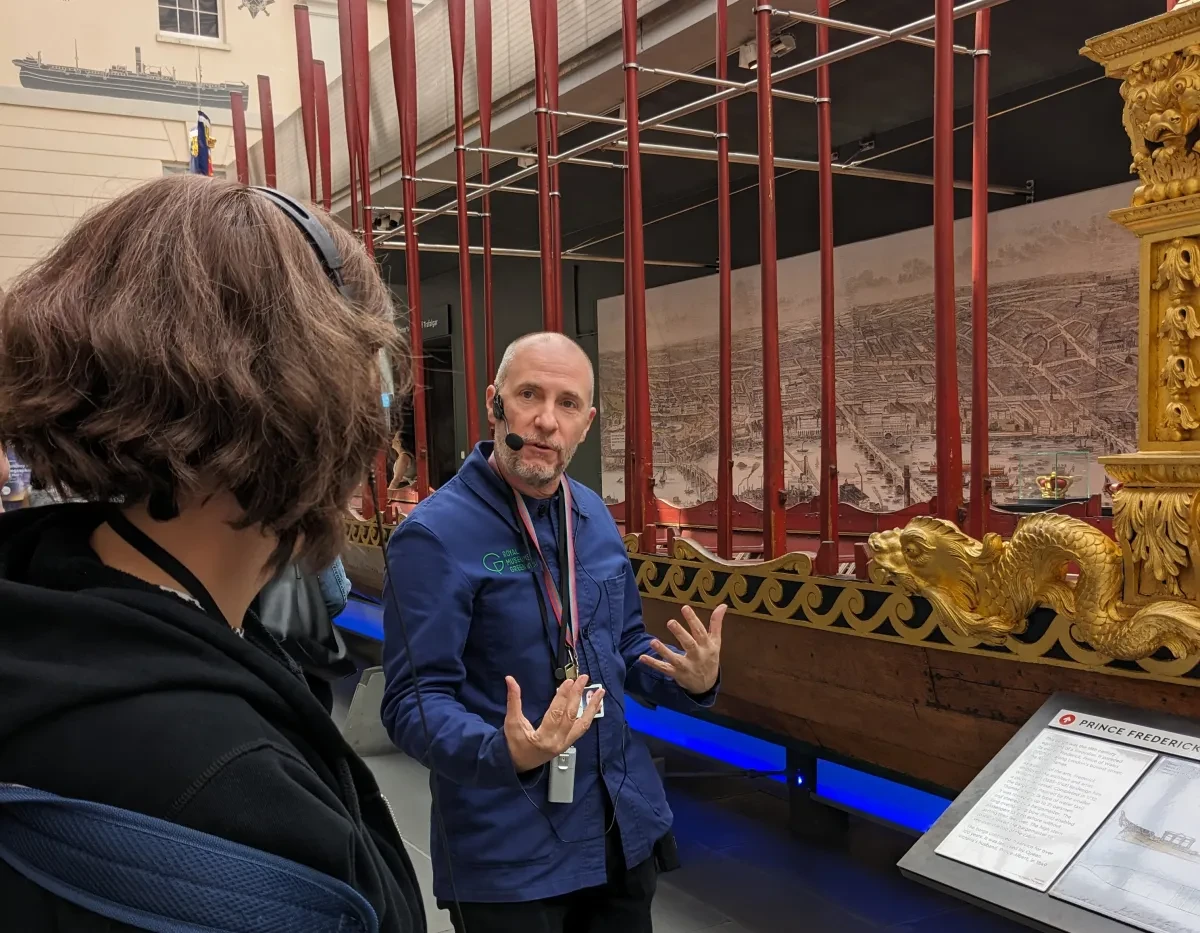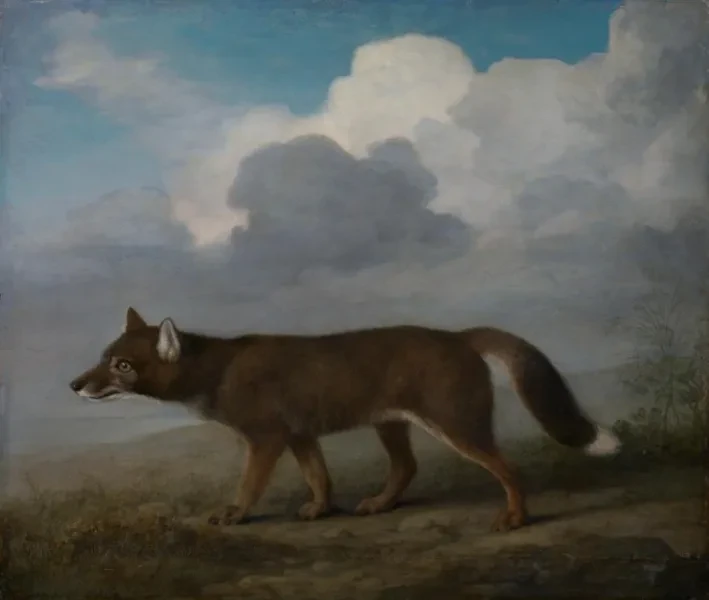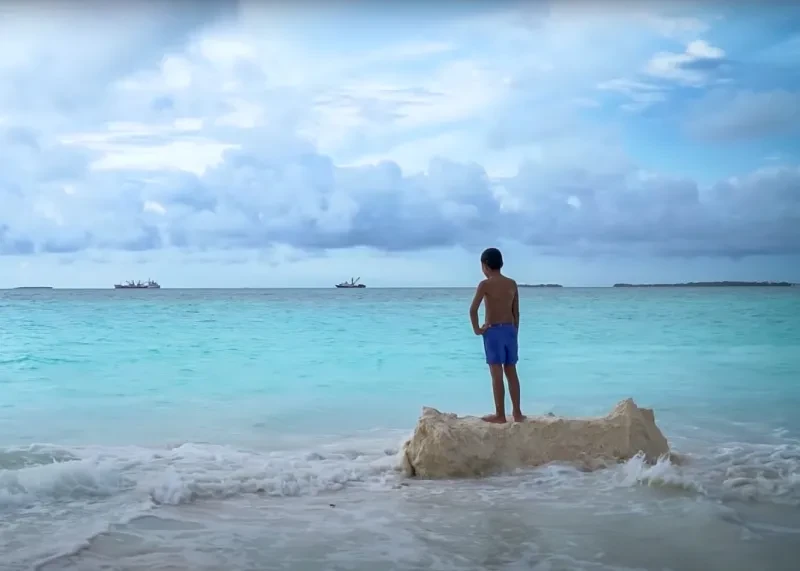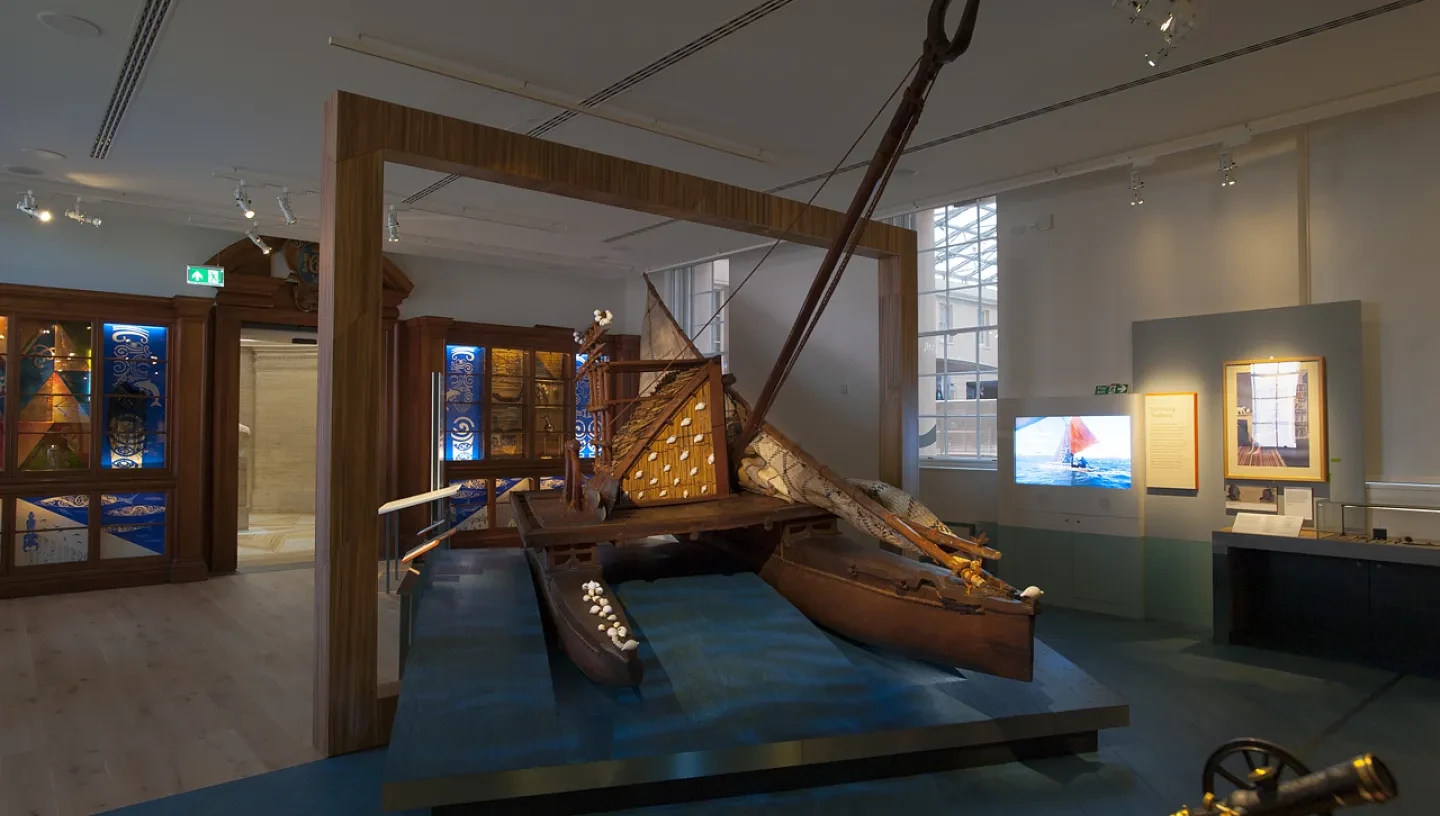
Essential information
| Location | |
|---|---|
| Price | Free |
The Pacific is the world’s largest ocean, covering one third of the globe. Its vast sea connects thousands of islands and many diverse cultures.
For thousands of years Tangata Moana – the peoples of the Pacific – have navigated across this mighty ocean, using the skilled art of wayfinding to guide them on their journeys. Not until the 16th century did Europeans begin to explore the region.
The Pacific Encounters gallery at the National Maritime Museum examines the early encounters between Pacific communities and European explorers, and explores the legacies of those encounters today.
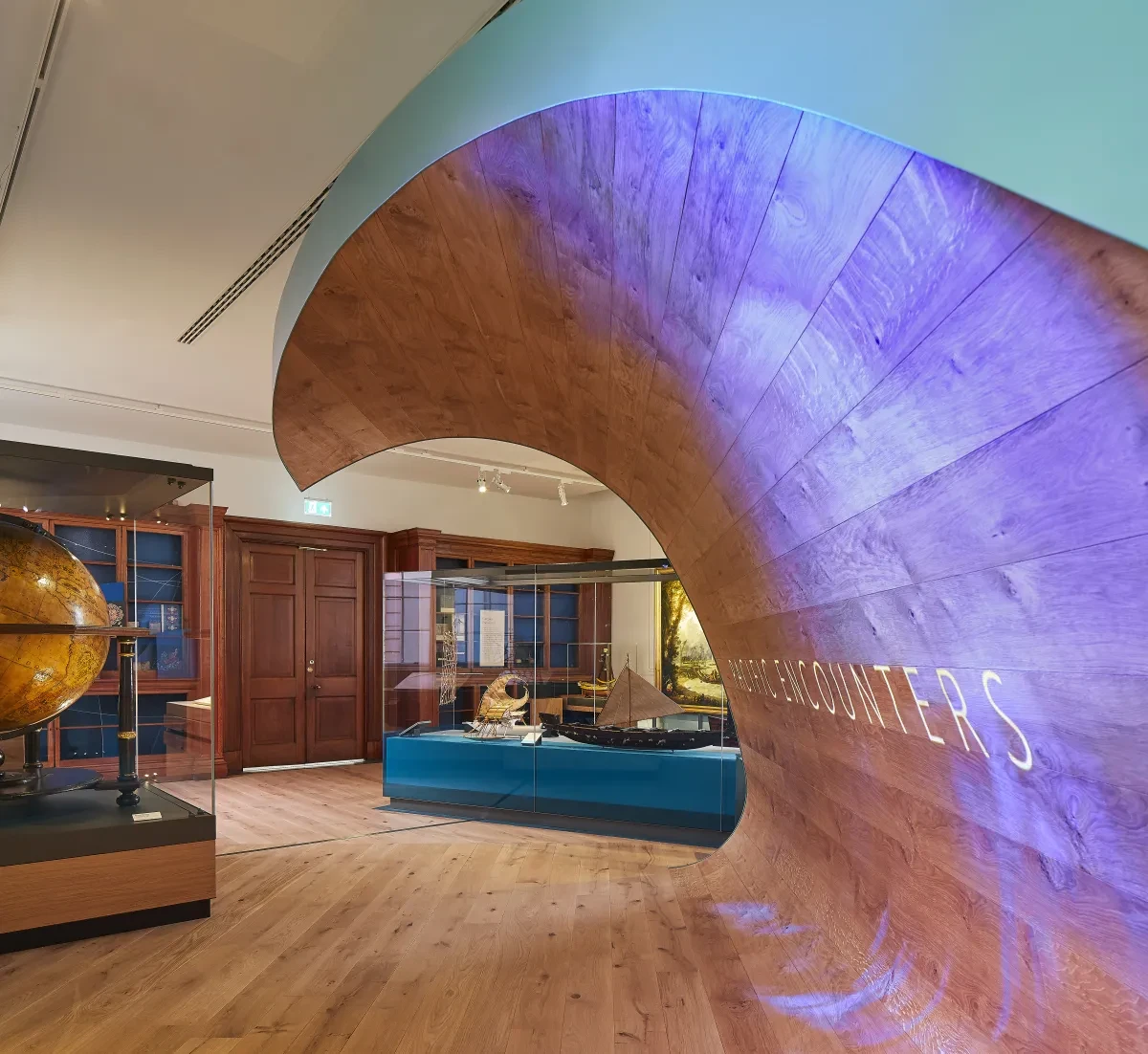
Inside the gallery
This gallery was created in collaboration with all communities from across the Pacific Ocean, based both in the UK and the Pacific.
For Tangata Moana (peoples of the Pacific Ocean), many ‘objects’ housed or displayed in European museums are precious cultural and ancestral treasures; powerful, sacred, breathing and connected. Respecting these treasures acknowledges their mana, or power.
European voyages to the Pacific began to increase during the 18th century. This was prompted by an interest in science and exploration – to map the region’s coasts and islands and record its wildlife and cultures – but also to identify land and resources for trade and exploitation.
In Britain, many of these expeditions were commissioned by the Admiralty. Between 1768 and 1780, Captain James Cook embarked on three voyages to the Pacific. Cook’s voyages brought new information that aided Western understanding of the world. However, they also brought lasting consequences for Pacific communities.
In the wake of Cook’s voyages, European missionaries, settlers and administrators arrived across the Pacific. While some interactions between Europeans and peoples of the Pacific were positive, many were violent, resulting in the loss of life, land and cultural heritage. The gallery aims to be a space to address these difficult legacies.
More recently, there has been a revival of the arts, heritage, customs and cultures of the Pacific – a source of pride and a cause for celebration across the ocean and its diverse communities.
Visiting Pacific Encounters
Where is the gallery?
Pacific Encounters is a permanent gallery at the National Maritime Museum in Greenwich, located on the first floor. Entry to the Museum is free: book tickets online in advance to guarantee entry and receive updates before you visit.
Tours and audio guides
Pacific Encounters features as part of the range of audio guides available at the National Maritime Museum. Listen to a free introduction to the gallery here, or find out more about objects on display by ordering a special Treasures Tour.
Accessibility
BSL is included as part of the National Maritime Museum audio guide. Large print guides are also available inside the gallery. For more information about accessibility at the National Maritime Museum, click here.
Gallery closures
Occasionally some gallery closures may affect your visit to the National Maritime Museum. Find details of upcoming closures here.
Make the most of your visit
Find more free galleries and attractions at the National Maritime Museum.
Tickets and Opening
Free entry
10am-5pm daily
- Greenwich Station
- Maze Hill Station
- Greenwich Pier
